Thirty four years capturing Beijing through the lens


"To China? By train? What! Why are you going there?"
July 1987, such questions were regularly asked about the reason I was setting off to travel overland, by railway, to a country then little known or understood in my homeland, Scotland!

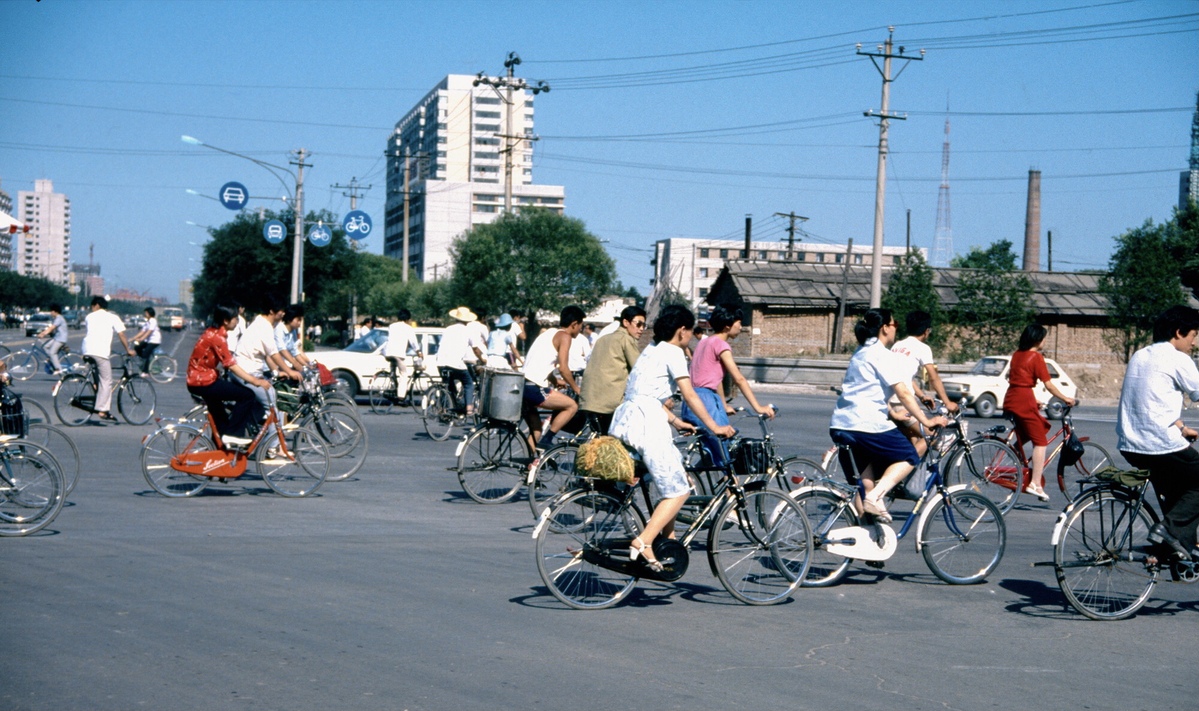
That three week journey, terminating in Hong Kong, proved to be a life changer. It introduced me both to China and to Beijing, a city today my home, my passion. I recall feeling not only the urban vastness of China's capital, but also the welcome, the curiosity towards me particularly while standing on the Great Wall. It was all so different to the urban life I had left a few weeks earlier. Beijing, a city of bicycles then boasting the 'quietest rush hour in the world' — it caught my fascination in ways hard to express.
A 35 hour journey south on what was China's No. 1 rail corridor took me to the tropics, to Guangdong, to Guangzhou. It would be seven years before returning to Beijing.
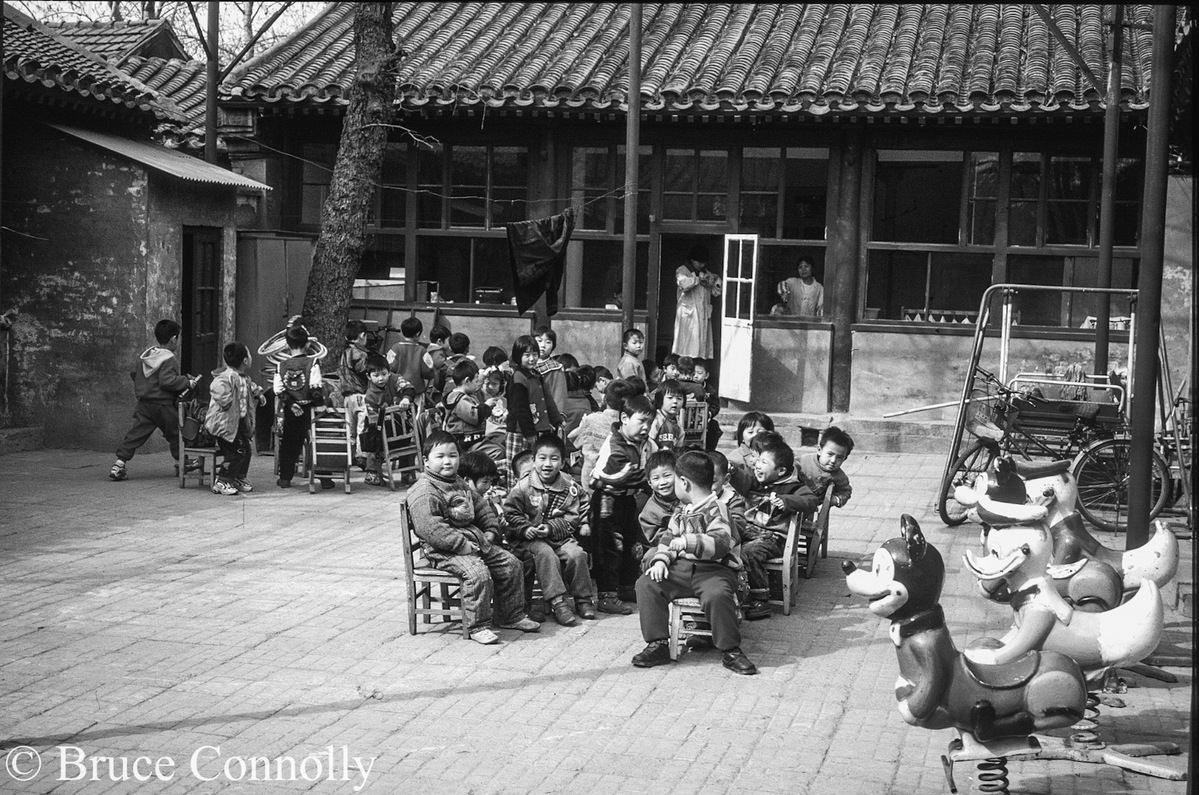
July 1994, I booked into a hotel along a traditional hutong near Yonghegong (Lama Temple). That marked the commencement of on an ongoing journey of discovery — to appreciate, to photograph the story of Beijing. As an historic geographer, the regularity of the older city quickly became apparent — its relationship to a Central Axis line; orientation of the alleys; strict protocols dictating layout and scale of courtyard homes (siheyuan). A story of precise urban planing going back to 13th century Yuan Dynasty. Never mentioned in my geography textbooks, I was determined to research, to explore its history.
Regularly visiting Jingshan Park, I would sit at Wanchun Pavilion looking north towards the Drum and Bell Towers of Zhonggulou before turning to face south over the Forbidden City. Stretching before me, a layout determined by geomacy, of harmony, the overriding needs of the Emperor, the imperial throne striding the meridian line. I would often ponder the relationship of today's historic city with long-gone 12th century Jin Dynasty Zhongdu, for example.
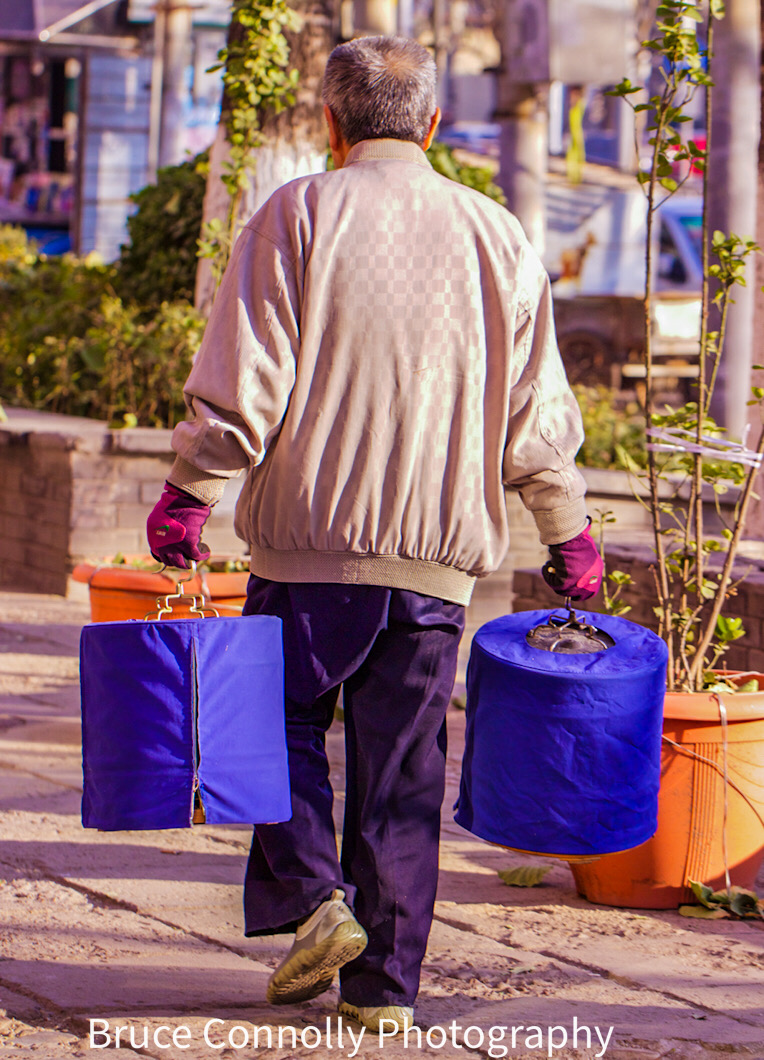
The early dynasties achieved feats of massive water engineering — producing a series of man-made lakes and waterways connecting with the Grand Canal. Regularly I would walk or cycle by the waters, trying to imagine the barges, over many centuries, bringing essential food supplies and people north from Hangzhou to the capital. This was where I could watch and record traditional Beijing scenes — the passion of locals for fishing, swimming or just sitting timelessly under the shade of overhanging trees.


A dream fulfilled, an opportunity to live an old Beijing life came in 2000 when I moved into a siheyuan courtyard near today's busy Nanluoguxiuang. Regularly, at dawn I strolled through my neighbouring alleys as they came to life — markets opening; children going to school; men carrying bamboo bird cages; the cries of hawkers on bicycle carts selling daily produce. My destination, often the idyllic landscapes around the Shichahai lakes. I was experiencing a more traditional city whose customs would gradually fade with modernity and urban expansion increasingly encroaching on the old.
Living for a while in southern Beijing provided more discoveries such as the former song bird market at Yutingqiao and nearby an incredible architectural wonder, the Temple of Heaven. However I also explored, and still do, parts of the historic Qing Dynasty outer city. There, Qianmen and Dashilar reflect so much of Beijing's 19th century story where narrow bustling alleys are lined with local restaurants; time-honoured brands such as long established pharmacies; shoe and silk shops. It has long been a personal delight to escort visitors, to introduce them to so much of that renowned street culture.
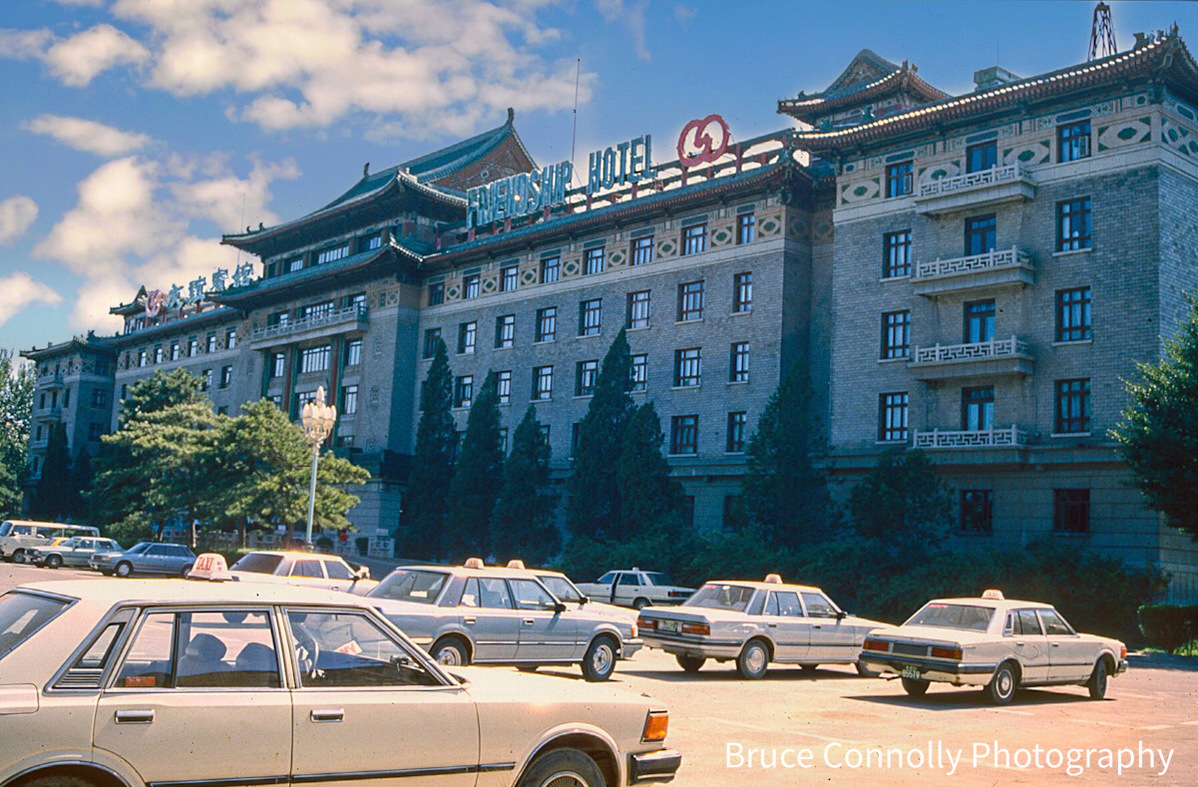

Beyond the pailou arch is Jianlou Tower, once part of the Ming Dynasty Inner City Walls.
December 2019
I followed over the years Qianmen Dajie's transformation from a congested, polluted street into a pleasant pedestrianised avenue leading south from the grandeur of Jianlou Tower. It was there on 8th August 2008, working for Radio Beijing I would be recorded saying to international visitors, who had arrived for the Olympics, "Beijing huanying ni!" ("Welcome to Beijing"). For 12 years I had a daily feature, 'Bruce in Beijing', recording with endless passion many fascinating tales of historic and contemporary Beijing.
By 2003, an apartment near Dongzhimen became home for a couple of years. No longer living amidst hutong alleys, the area represented some of the capital's post-1949 industrialisation. Living amidst local communities, my neighbours, many formally worked in the now long-gone factories, all added to appreciating Beijing's intriguing, indeed complex story.

The city we see today, I could never have imagined in 1987. A world-leading metro system compared to the two lines of yesteryear. A cashless society where on-line platforms such as WeChat have transformed daily lives; the on-going environmental work producing many blue sky days; the city's lakes and canals cleaned up along with continuing upgrading of the many urban parks and gardens.
Today I am photographing the fast-moving lifestyles of younger generations around vibrant Sanlitun while documenting the quieter, everyday story of the 'laobaixing' (older generations) still living peacefully in backstreet hutongs.
China World Mall at Guomao offers me a range of domestic and international cuisine unimaginable 20 years ago. From its east-facing outdoor terrace I have captured the construction, over several years, of now-finished 530 metre tall China Zun (CITIC Building). Part of Beijing's 21st century skyline, it stands close to a contemporary icon, CCTV HQ.
Over the past 34 years, my travels, work and photography have taken me nationwide, allowing countless opportunities to appreciate the country's continual growth and development.
In the early 1990's I was based in Guangzhou during the initial years of 'Reform and Opening Up' — an opportunity to watch firsthand an unstoppable transformation moving inland from Shenzhen, spreading nationwide. Ongoing travels have since led from Hainan to Heilongjiang; Shanghai to Xinjiang; Tianjin to Tibet and much more.
At the heart of my China story, Beijing, a city like China itself, has given me so much; one I am still documenting through camera and pen; a city I still enthusiastically introduce to visitors and one which I regularly talk about with endless passion. A story that has lasted over third of a century, a story that continues, a story that started with a railway journey in 1987 I described as 'The Ultimate Dream — a Railway Journey to China'!
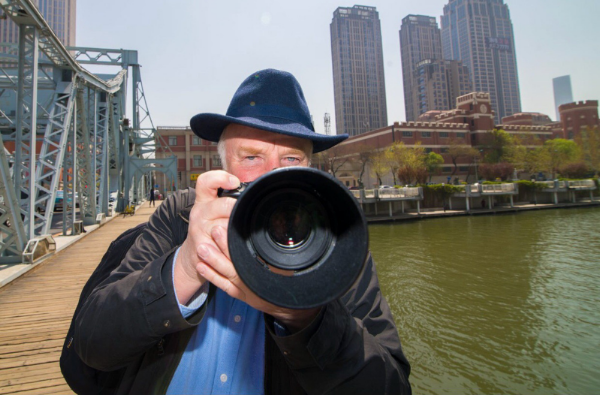
Bruce Connolly first came to China in 1987, by railway train from Scotland. Fascinated with what he saw, he returned to live and work in Guangzhou between 1992-93. Living in southern China Bruce was able to visit, explore parts of the country such as Hainan and Guangxi before today's mass tourism.
He has since traveled through much of China, with his camera and pen, recording not only the beauty of the country, it's physical and human diversity, but also how it was changing.
In 1994, he also started on a journey of discovery, of Beijing. Walking across much of the city he captured through his camera lens many stories and memories of the city as it went through its stages of development and transformation into the international city of today.
Bruce wrote about Beijing for publications such as Beijing This Month and for 12 years with Radio Beijing had a daily feature, 'Bruce in Beijing'.
He still lives in Beijing, his adopted home, and continues regularly to walk and record the city today with his camera.
The opinions expressed here are those of the writer and do not necessarily represent the views of China Daily and China Daily website.


